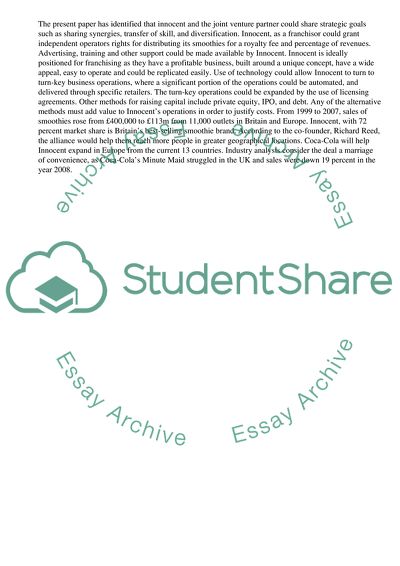Cite this document
(Strategic Alliance: Innocent Meets Coca-Cola Assignment, n.d.)
Strategic Alliance: Innocent Meets Coca-Cola Assignment. Retrieved from https://studentshare.org/business/1724645-business-strategy-test
Strategic Alliance: Innocent Meets Coca-Cola Assignment. Retrieved from https://studentshare.org/business/1724645-business-strategy-test
(Strategic Alliance: Innocent Meets Coca-Cola Assignment)
Strategic Alliance: Innocent Meets Coca-Cola Assignment. https://studentshare.org/business/1724645-business-strategy-test.
Strategic Alliance: Innocent Meets Coca-Cola Assignment. https://studentshare.org/business/1724645-business-strategy-test.
“Strategic Alliance: Innocent Meets Coca-Cola Assignment”, n.d. https://studentshare.org/business/1724645-business-strategy-test.


